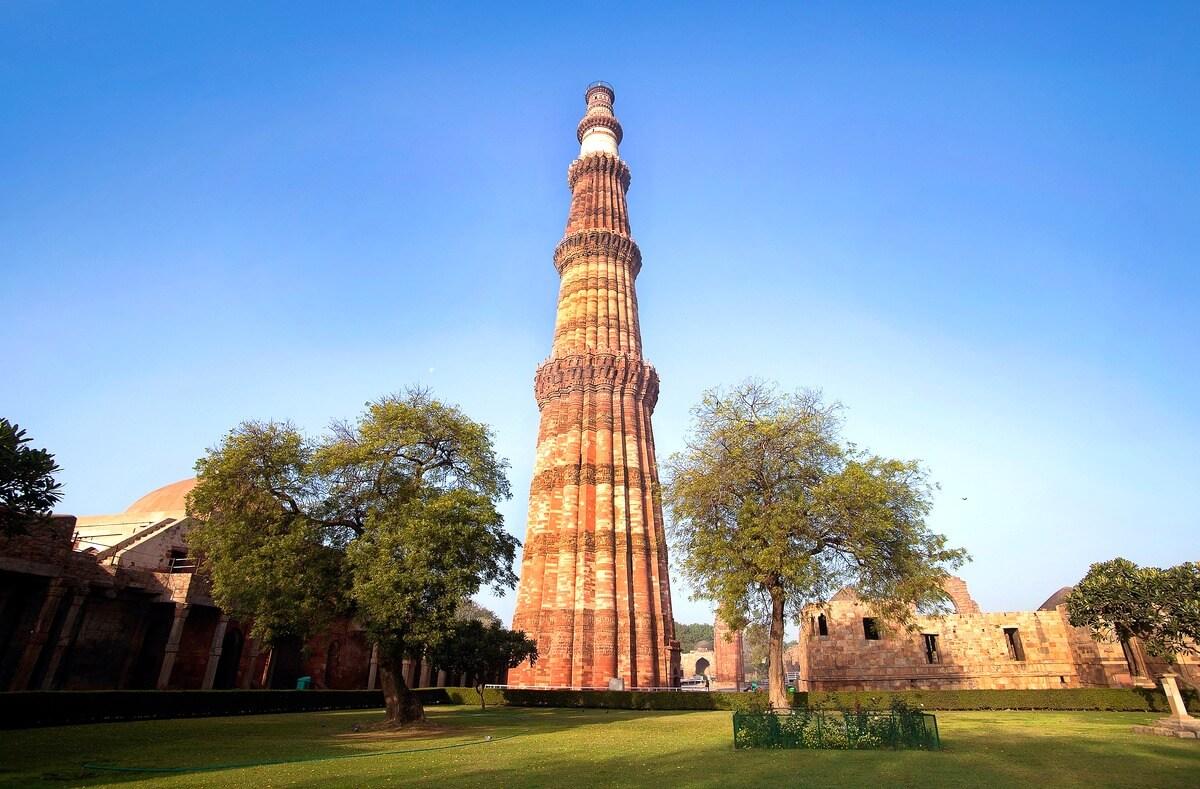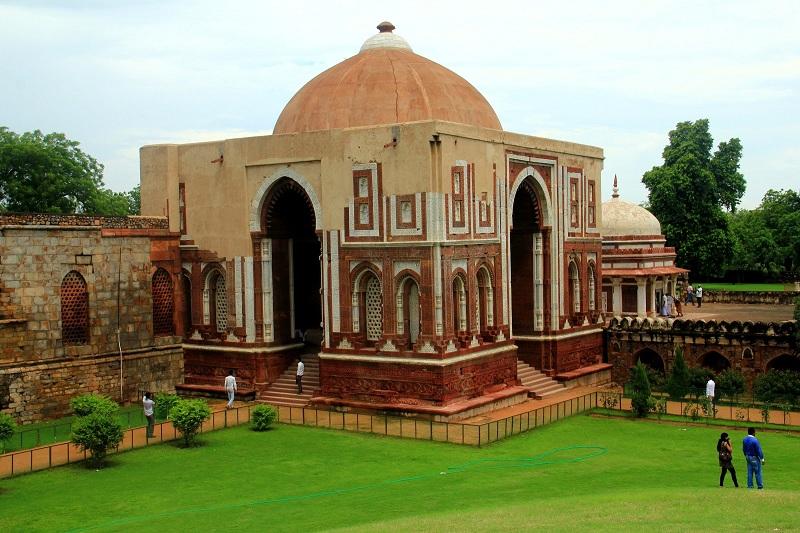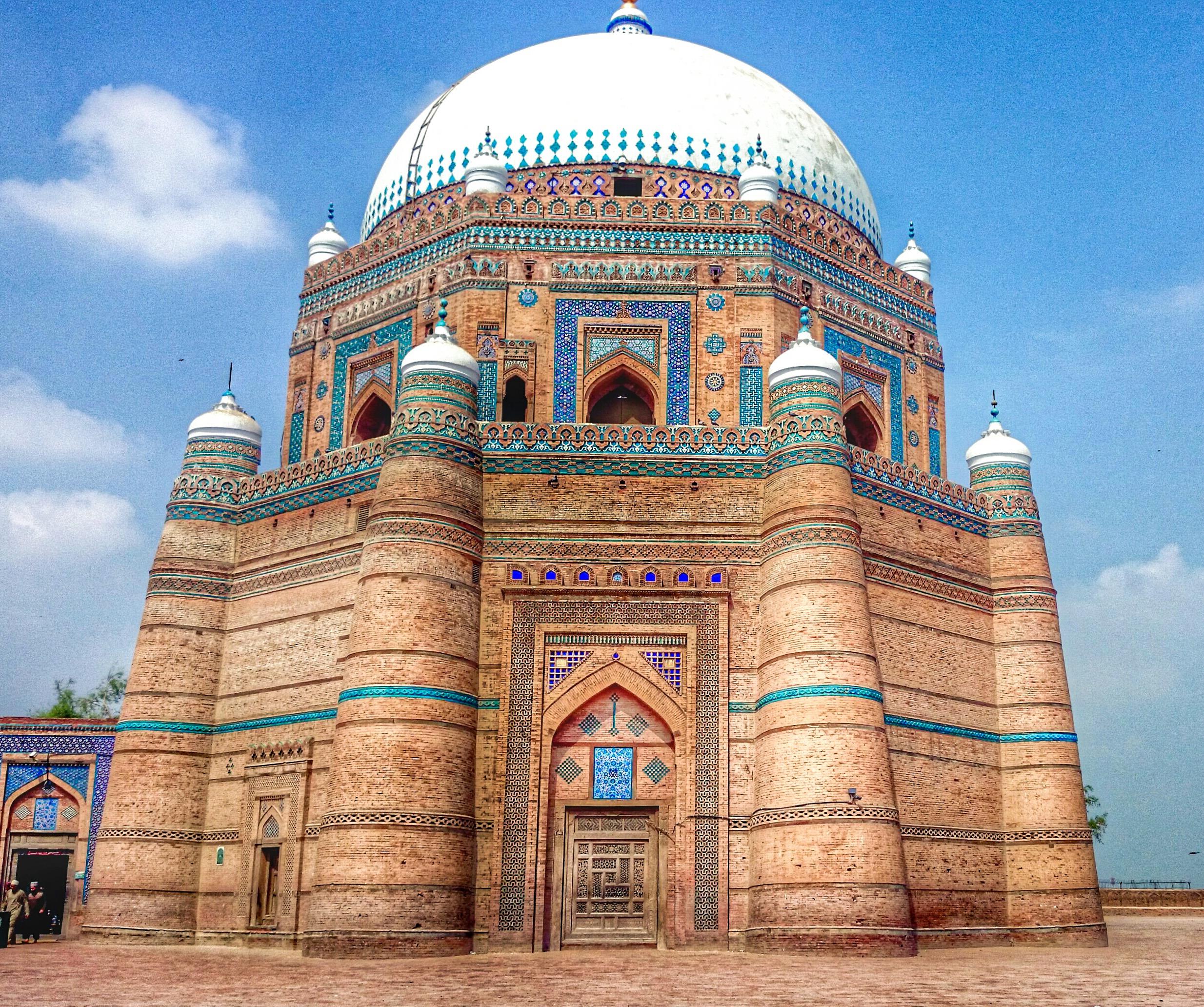Table of Contents
The Delhi Sultanate was a Muslim empire that ruled over a significant part of the Indian subcontinent from 1206 to 1526. It was the first Muslim dynasty to rule over India, and its influence on Indian history cannot be overstated. During the Sultanate period, the Indian subcontinent witnessed significant changes in various aspects of society, including politics, culture, and religion.
Establishment of Delhi Sultanate
The Delhi Sultanate was established by Qutb-ud-din Aibak, a Turkish slave of Muhammad Ghori, who defeated the last Hindu ruler of Delhi in 1192. After Ghori’s death in 1206, Aibak declared himself the Sultan of Delhi and founded the Slave dynasty. This marked the beginning of the Delhi Sultanate, which lasted for three centuries and saw the rise and fall of several dynasties.
Delhi Sultanate: Features
- The Sultanate period was characterized by the introduction of Islamic law and culture, which had a profound impact on Indian society.
- The sultans patronized Islamic scholars and built mosques, madrasas, and other religious institutions throughout their empire.
- The introduction of Persian as the official language of the court also had a lasting impact on Indian literature and culture.
- The Delhi Sultanate was divided into several dynasties, each with its distinct characteristics.
- The Slave dynasty was followed by the Khalji dynasty, which saw the rise of Jalal-ud-din Khalji and his nephew Alauddin Khalji.
- Alauddin Khalji is known for his administrative and military reforms, which strengthened the central authority and expanded the empire’s borders.
- The Tughlaq dynasty succeeded the Khaljis, and its most famous ruler was Muhammad bin Tughlaq.
- He is remembered for his ambitious projects, such as the transfer of the capital from Delhi to Daulatabad and the introduction of a new currency.
- However, his policies proved unpopular and led to revolts and unrest throughout his empire.
- The Lodi dynasty, which followed the Tughlaqs, was the last Muslim dynasty to rule over India before the Mughal Empire.
- The Lodi dynasty was established by Bahlul Khan Lodi, who became the Sultan of Delhi in 1451.
- His successors were plagued by internal conflicts and external invasions, which ultimately led to their downfall.
Decline of Delhi Sultanate
The Delhi Sultanate’s decline paved the way for the Mughal Empire, which was founded by Babur in 1526. However, the Sultanate period played a crucial role in shaping Indian history and culture. It saw the emergence of a new Islamic culture and the development of a unique Indo-Islamic architectural style. The Sultanate period also witnessed the emergence of Sufism, a mystical Islamic tradition that played a significant role in spreading Islam in India.
The Delhi Sultanate was a pivotal period in Indian history that saw the introduction of Islamic culture and law. The Sultanate period saw the rise and fall of several dynasties, each with its distinct characteristics. Despite its eventual decline, the Delhi Sultanate’s impact on Indian culture and history cannot be overstated.
Delhi Sultanate Period
The Delhi Sultanate Period refers to the period of Muslim rule in the Indian subcontinent from the 13th to the 16th century. The Delhi Sultanate was a series of Muslim dynasties that ruled over various parts of India from their capital in Delhi. This period is considered significant in Indian history as it marked the beginning of Muslim rule in India, which had a lasting impact on Indian culture and society.
- The Delhi Sultanate was founded by Qutb-ud-din Aibak in 1206, who was a slave of Muhammad Ghori, the ruler of Afghanistan.
- After Ghori’s death, Aibak established himself as the first Sultan of Delhi and ruled until his death in 1210.
- Aibak was succeeded by his slave-turned-successor Iltutmish, who expanded the Sultanate’s territory and consolidated its power.
- During the Delhi Sultanate Period, the rulers were predominantly Muslim, and their administration was based on Islamic principles.
- However, the Sultanate was also marked by cultural and religious diversity.
- The Sultanate’s rulers allowed Hindus and other non-Muslims to practice their religion and follow their customs.
- The rulers also patronized Indian art, architecture, and literature, which resulted in the fusion of Islamic and Indian cultural traditions.
- The Delhi Sultanate Period saw significant achievements in the fields of art, architecture, and literature.
- The Sultanate’s rulers commissioned many beautiful buildings, including mosques, tombs, and palaces, which were characterized by their intricate designs and ornate decorations.
- The Qutub Minar, which is one of the most famous landmarks of Delhi, was constructed during this period.
- The Delhi Sultanate Period also saw the emergence of new forms of literature, including Persian and Urdu poetry.
- Many famous poets, such as Amir Khusro, wrote during this period, and their works continue to be celebrated today.
- The Delhi Sultanate Period was not without its challenges.
- The Sultanate faced numerous invasions by Mongol forces and other foreign powers, which weakened the Sultanate’s power and reduced its territory.
- The Sultanate also faced internal conflicts and power struggles, which contributed to its decline in the 16th century.
The Delhi Sultanate Period was a significant period in Indian history. It marked the beginning of Muslim rule in India, which had a lasting impact on Indian culture and society. The Sultanate’s rulers patronized art, architecture, and literature, which resulted in the fusion of Islamic and Indian cultural traditions. Despite facing numerous challenges, the Delhi Sultanate Period saw significant achievements and continues to be celebrated today for its rich cultural heritage.
Delhi Sultanate Most Notable Rulers
The Delhi Sultanate was a medieval Muslim state that existed in the Indian subcontinent from the 13th to the 16th century. It was established by Turkish and Afghan Muslim dynasties who conquered large parts of northern India, including present-day Pakistan and Bangladesh. The Delhi Sultanate was a significant period in the history of India, as it marked the beginning of Muslim rule in the country and left a lasting impact on its culture, politics, and society.
Here are some of the most notable Delhi Sultanate rulers:
Notable Rulers of Delhi Sultanate: Qutb-ud-din Aibak (r. 1206-1210)
Aibak was a Turkish slave who rose to power as the first Sultan of Delhi after the defeat of the Hindu king Prithviraj Chauhan. He founded the Slave dynasty and established the city of Delhi as his capital. Aibak was a capable ruler who built several monuments, including the Qutub Minar and the Quwwat-ul-Islam mosque.
Notable Rulers of Delhi Sultanate: Iltutmish (r. 1210-1236)
Iltutmish was the son-in-law of Aibak and succeeded him as the Sultan of Delhi. He consolidated the power of the Delhi Sultanate and expanded its territories to include Bengal, Gujarat, and parts of central India. Iltutmish was also a patron of the arts and built several tombs and mosques, including the famous Qutub Minar.
Notable Rulers of Delhi Sultanate: Razia Sultan (r. 1236-1240)
Razia Sultan was the daughter of Iltutmish and the only woman to rule the Delhi Sultanate. She was a capable ruler who fought against the conservative Muslim nobles who opposed her reign. However, she faced several rebellions and was eventually deposed and killed by her own army.
Notable Rulers of Delhi Sultanate: Ghiyasuddin Balban (r. 1266-1287)
Balban was a Turkish noble who rose to power as the Sultan of Delhi after a period of political instability. He was a strong and ruthless ruler who reformed the administration and military of the Delhi Sultanate. Balban also strengthened the power of the monarchy by curbing the influence of the nobles and establishing a strict protocol of court etiquette.
Alauddin Khilji (r. 1296-1316)
Khilji was a powerful and ambitious ruler who expanded the Delhi Sultanate to include parts of southern India and present-day Pakistan. He was also a patron of the arts and built several monuments, including the Alai Darwaza and the Qutub Minar. However, Khilji was known for his cruelty and is infamous for his treatment of the defeated Rajput princess, Padmini.
Muhammad bin Tughlaq (r. 1325-1351)
Tughlaq was a brilliant but eccentric ruler who undertook several ambitious projects, including the transfer of the capital from Delhi to Daulatabad and the introduction of a new currency. However, these projects proved to be disastrous and led to widespread discontent and rebellion. Tughlaq’s reign is considered one of the most chaotic and turbulent periods in the history of the Delhi Sultanate.
Firuz Shah Tughlaq (r. 1351-1388)
Firuz Shah Tughlaq was a benevolent and pious ruler who built several public works, including canals, roads, and hospitals. He was also a patron of the arts and commissioned several buildings, including the Hauz Khas complex and the Feroz Shah Kotla fortress. However, Firuz Shah Tughlaq’s reign was marked by political instability and rebellion.
Delhi Sultanate Dynasties
The Delhi Sultanate was a Muslim empire that ruled over parts of India from the 13th to the 16th centuries. The sultanate was established after the invasion of the Ghurid Empire, led by the famous general Muhammad of Ghor, who defeated the last Hindu ruler of Delhi, Prithviraj Chauhan, in 1192. The Delhi Sultanate was composed of five major dynasties, each with its unique characteristics and contributions to the history of India.
Delhi Sultanate Dynasties: The Slave Dynasty (1206-1290 CE)
The Slave Dynasty was the first Muslim dynasty to rule Delhi. The founder of this dynasty was Qutb-ud-din Aibak, a Turkish slave who was appointed as the governor of Delhi by Muhammad of Ghor. He declared himself as the sultan and established his capital in Delhi. During his reign, he constructed the Qutub Minar, which is now a UNESCO World Heritage Site.
The most prominent ruler of the Slave Dynasty was Iltutmish, who was the son-in-law of Qutb-ud-din Aibak. He was a great administrator and expanded the empire by annexing territories in Gujarat, Rajasthan, and Bengal. He also introduced the silver tanka as the official currency and established a system of provincial governors to manage the affairs of the empire.

Delhi Sultanate Dynasties: The Khilji Dynasty (1290-1320 CE)
The Khilji Dynasty was founded by Jalal-ud-din Khilji, who was a general in the army of the last Slave Dynasty ruler, Balban. He deposed the last Slave Dynasty ruler, Qaiqabad, and established his capital in Delhi. Jalal-ud-din was known for his military campaigns against the Mongols and the Rajputs.
The most famous ruler of the Khilji Dynasty was Alauddin Khilji, who was the nephew of Jalal-ud-din. He was a brilliant military commander and conquered a vast empire that extended from the borders of Afghanistan to the Bay of Bengal. He introduced various administrative reforms, such as the market regulation system and the price control system. He also established a network of spies to keep an eye on the activities of his nobles.

Delhi Sultanate Dynasties: The Tughlaq Dynasty (1320-1412 CE)
The Tughlaq Dynasty was founded by Ghiyas-ud-din Tughlaq, who was a former governor of Punjab. He deposed the last ruler of the Khilji Dynasty, Khusro Khan, and established his capital in Delhi. He was known for his policies of religious tolerance and patronage of the arts.
The most famous ruler of the Tughlaq Dynasty was Muhammad-bin-Tughlaq, who was known for his eccentricities. He attempted to shift the capital from Delhi to Daulatabad, which resulted in the death of thousands of people due to the forced migration. He also introduced the token currency system, which led to inflation and economic chaos.
Delhi Sultanate Dynasties: The Sayyid Dynasty (1414-1451 CE)
The Sayyid Dynasty was founded by Khizr Khan, who was a former governor of Multan. He deposed the last ruler of the Tughlaq Dynasty, Nasir-ud-din Mahmud, and established his capital in Delhi. The Sayyid Dynasty was a period of relative stability and peace, and the rulers were known for their patronage of the arts.
The most famous ruler of the Sayyid Dynasty was Muhammad Shah, who was known for his piety and religious tolerance. He was a great patron of the arts and supported the construction of many mosques and madrasas.
Delhi Sultanate Dynasties: The Lodi Dynasty (1451-1526 CE)
The Lodi Dynasty was the last dynasty of the Delhi Sultanate, founded by Bahlul Khan Lodi, who was a governor of Lahore. He defeated the last ruler of the Sayyid Dynasty, Alam Shah, and established his capital in Delhi. The Lodi Dynasty was known for its military prowess and its efforts to maintain law and order in the empire.
- The most famous ruler of the Lodi Dynasty was Sikandar Lodi, who was known for his administrative reforms.
- He introduced a system of revenue collection and land measurement, which improved the efficiency of the administration.
- He also patronized the arts and literature, and his court was a center of culture and learning.
- However, the Lodi Dynasty faced many challenges, including the rising power of regional kingdoms and the invasion of the Mughals.
- In 1526, Babur, the founder of the Mughal Empire, defeated Ibrahim Lodi, the last ruler of the Lodi Dynasty, in the Battle of Panipat, and established his rule in Delhi.
The Delhi Sultanate was a significant period in the history of India, marked by the establishment of Muslim rule in North India. The five dynasties of the Delhi Sultanate left their mark on the history and culture of India, with their contributions ranging from architecture and literature to administrative reforms and military conquests. The legacy of the Delhi Sultanate is still visible in the monuments and traditions of India, making it an important part of the country’s rich cultural heritage.
Delhi Sultanate Architecture: A Blend of Indian and Islamic Styles
The Delhi Sultanate period (1206-1526) in India saw the emergence of a distinctive architectural style that blended Indian and Islamic elements. The Delhi sultans, who were Muslims from Central Asia, introduced new forms, materials, and techniques of construction, which they adapted to suit the Indian context. The resulting architecture was characterized by a synthesis of different traditions and a rich diversity of forms.
- The Delhi Sultanate period saw the construction of several notable monuments that still stand today, including mosques, tombs, palaces, and forts.
- These structures were built using local materials such as red sandstone and white marble, which were abundantly available in the region.
- The use of these materials allowed the builders to create intricate carvings and patterns on the facades of the buildings, which became a hallmark of Delhi Sultanate architecture.
- One of the most prominent examples of Delhi Sultanate architecture is the Qutub Minar, a towering minaret located in Delhi.
- Built in the early 13th century, the Qutub Minar stands at a height of 73 meters and is made of red sandstone and marble.
- The structure features intricate carvings of Islamic calligraphy and geometric patterns, as well as Hindu motifs such as lotus flowers and elephants.
- The Qutub Minar is a testament to the fusion of Indian and Islamic architectural styles, which was a defining characteristic of the Delhi Sultanate period.
- Another notable example of Delhi Sultanate architecture is the Jama Masjid, a grand mosque located in Old Delhi.
- Built by the Mughal emperor Shah Jahan in the 17th century, the Jama Masjid is one of the largest mosques in India, capable of accommodating up to 25,000 worshippers at a time.
- The mosque is built of red sandstone and white marble and features three domes, two minarets, and several smaller domes and arches.
- The facade of the mosque is decorated with intricate calligraphy and geometric patterns, which add to the grandeur of the structure.
- The Delhi Sultanate period also saw the construction of several tombs and mausoleums, which were built to honor the memory of the sultans and their families.
- One of the most famous of these is the Tomb of Ghiyasuddin Tughlaq, located in Tughlaqabad in Delhi.
- The tomb is a simple yet elegant structure made of red sandstone and features a dome and arches.
- The tomb is surrounded by a fortified wall, which was built to protect it from invaders.
- The Delhi Sultanate period also saw the construction of several palaces and forts, which were built to serve as the residence and seat of power of the sultans.
- One of the most famous of these is the Red Fort in Delhi, which was built by the Mughal emperor Shah Jahan in the 17th century.
- The Red Fort is a massive complex made of red sandstone and features several buildings and courtyards, including the Diwan-i-Am (Hall of Public Audience) and the Diwan-i-Khas (Hall of Private Audience).
Delhi Sultanate architecture was a unique blend of Indian and Islamic styles that emerged during the medieval period in India. The architecture of this period was characterized by a synthesis of different traditions and a rich diversity of forms. The monuments, mosques, tombs, palaces, and forts built during the Delhi Sultanate period are a testament to the creative spirit and ingenuity of the builders of that era. Today, these structures stand as a testimony to the rich cultural heritage of India and serve as a source of inspiration for architects and designers around the world.
Check: All UPSC History Notes




 TSPSC Group 1 Question Paper 2024, Downl...
TSPSC Group 1 Question Paper 2024, Downl...
 TSPSC Group 1 Answer key 2024 Out, Downl...
TSPSC Group 1 Answer key 2024 Out, Downl...
 UPSC Prelims 2024 Question Paper, Downlo...
UPSC Prelims 2024 Question Paper, Downlo...




